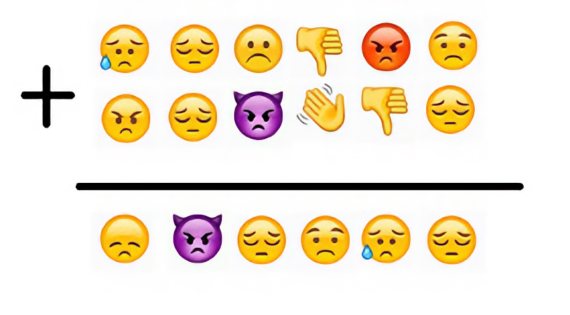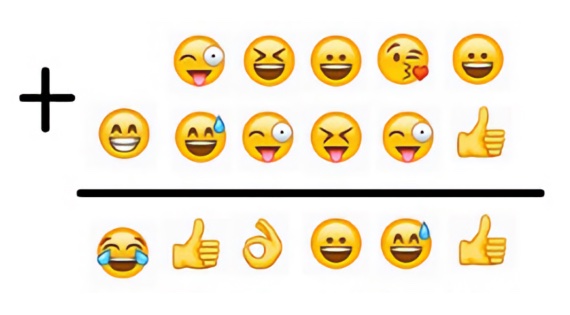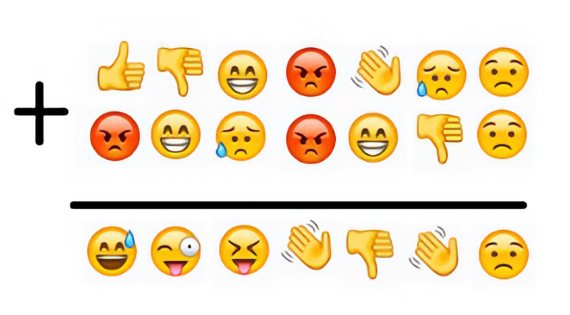For some time now, Human Resources departments have been assessing the emotions expressed in the work environment as an indication of the employee’s state of mind with respect to their job and their tasks. But how do we assess and evaluate these emotions in the era of telework, when the new normal brought about by the pandemic restricts face-to-face interaction?
A recent study suggests making use of emojis in emails and chats. Researchers have found evidence that emojis reflect the mental and emotional state of employees, and argue that they are useful for anticipating potential conflicts, problems and resignations.
Game 1: A number of emojis
Each of these emojis represents a number from 0 to 9. Solve the sum and identify which one encodes each value.

Why emojis?
Emojis have long been accepted as a new non-verbal language and a universal form of communication, and their widespread use has been the subject of research. Several studies have identified these symbols as clues to emotions and feelings; to commitment, affiliation and a sense of belonging to a group; to personality; to mental health; and even to cultural background. Researchers say that these clues are more reliable than words—or at least easier to identify and analyse (both quantitatively and qualitatively).
What the authors of the new study have done is to extrapolate this analysis to the professional environment. And after processing more than 60,000 messages exchanged in this context, the authors have reached two main conclusions:
- The use of emojis, even those that reflect negative emotions, implies a lower risk of dropout than not using them at all. In other words, a worker that expresses any emotion (through emojis) is healthier for their work environment than not expressing any emotion at all. First, because doing so serves as an outlet or decompression valve, as a way of releasing tensions and frustrations. And second, because it allows colleagues to know the emotional state of the sender and, with this knowledge, to anticipate and try to reverse the situation.
- The number and variety of emojis used are a reliable indicator of the risk level of problems. The greater the quantity and richness of translucent emotions, the better the mental and emotional health of the worker and the more comfortable and identified they feel about their performance. Moreover, using (and encouraging the use of) various emojis is a simple, fun and immediate way to reduce stress, relax, introduce moments of distraction and enhance relationships and bonding between colleagues.
Game 2: Don’t laugh, it’s harder!
The challenge is the same as in the previous game, but the level of difficulty is higher.

In addition to the above conclusions, the researchers introduce two nuances.
- Although their presence is generally reassuring, the abuse of emojis that only convey negative emotions (or even that these take precedence over those that communicate positive emotions) such as anxiety, fear, sadness, leaving, boredom, anger or hatred should sound the alarm bells for those in charge of the sender of such messages.
- And the quantity and richness of emojis are a good indicator, but with one exception: the systematic introduction of emoticons—in all messages and/or always the same ones—is an indication of obsessive behaviour, which in turn is a risk factor for professional stress and burnout. In contrast, regular but non-recurrent use and randomness in inserting them denote a mental balance with regard to work.
These conclusions and nuances lead the authors of the study to suggest some measures for companies: the main one is to encourage the use of this type of non-verbal communication in work messages, both among colleagues and in messages sent by managers and superiors, and even in corporate communications.
Given the enthusiasm 🥳, rejection 👎 or distrust 🧐 that these conclusions and suggestions may generate, we offer up a third challenge.
Game 3: Diversity always adds up
A more extensive operation, but with a catch—will you be able to figure it out in time before giving up?

Solutions
Miguel Barral
Comments on this publication